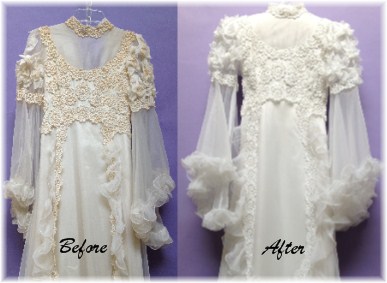 Various mixtures are prepared by the conservator for cleaning very delicate fabrics, e.g.. proposed by K. Nagya (1972) contains 10 parts of toluene, 2,5 parts of an aqueous solution of ammonia, 1 part of the alkyl sulfonate dissolved in 10 parts of hot water.
Various mixtures are prepared by the conservator for cleaning very delicate fabrics, e.g.. proposed by K. Nagya (1972) contains 10 parts of toluene, 2,5 parts of an aqueous solution of ammonia, 1 part of the alkyl sulfonate dissolved in 10 parts of hot water.
There are also so-called. cleansing substances, e.g.. from crushed wheat bran with a detergent solution or with an organic solvent in a thick form, damp, but partly still loose pulp, possibly acidified with vinegar to revive the colors. The treatment consists in rubbing a layer of mush with a thickness of approx 1 cm into the fabric, which is thoroughly cleaned after drying. The danger of the procedure lies in this, that bran can be a good breeding ground for microorganisms. Another cleaning substance is 20 g of copper sulfate dissolved in 0,5 liters of hot water with the addition 0,5 kg of flour. The mass is well mixed and kneaded to a hard knob, after adding more 40 and glycerin, is applied to the fabric (Wojciechowska A., 1964). Potato flour heated in a water bath is also used to clean the dirt on the fabric (do ok. 50°C), which the fabric is covered, finger-thick embroidery and lace, presses hard and 10 brushes off in minutes: the procedure is repeated, if necessary (Jackson A., David D., 1985).
You know, that every cleaning, both wet and dry, affects the state of preservation of old fabrics, therefore, in some cases it is better to refrain from cleaning the object.